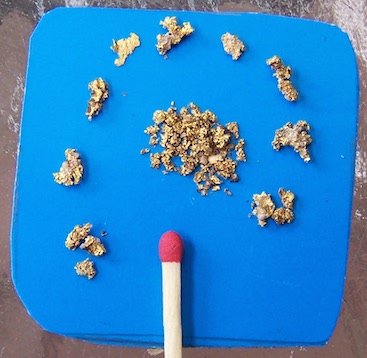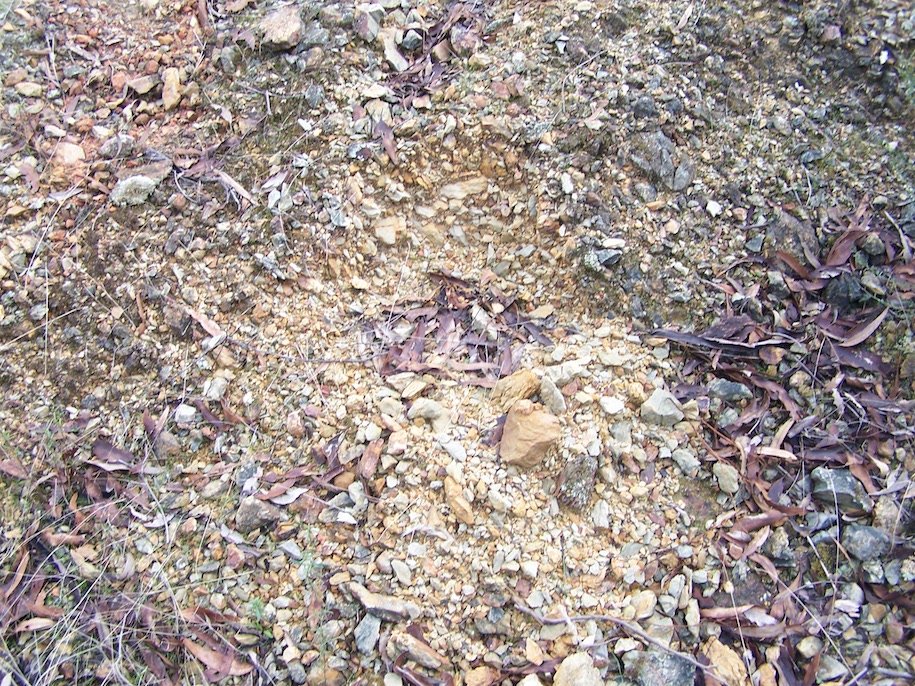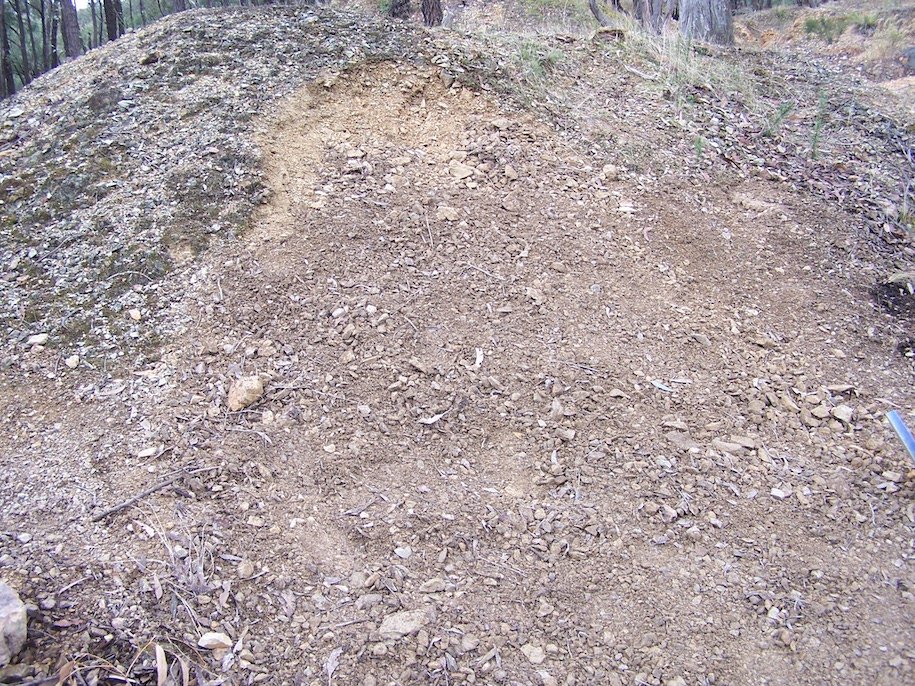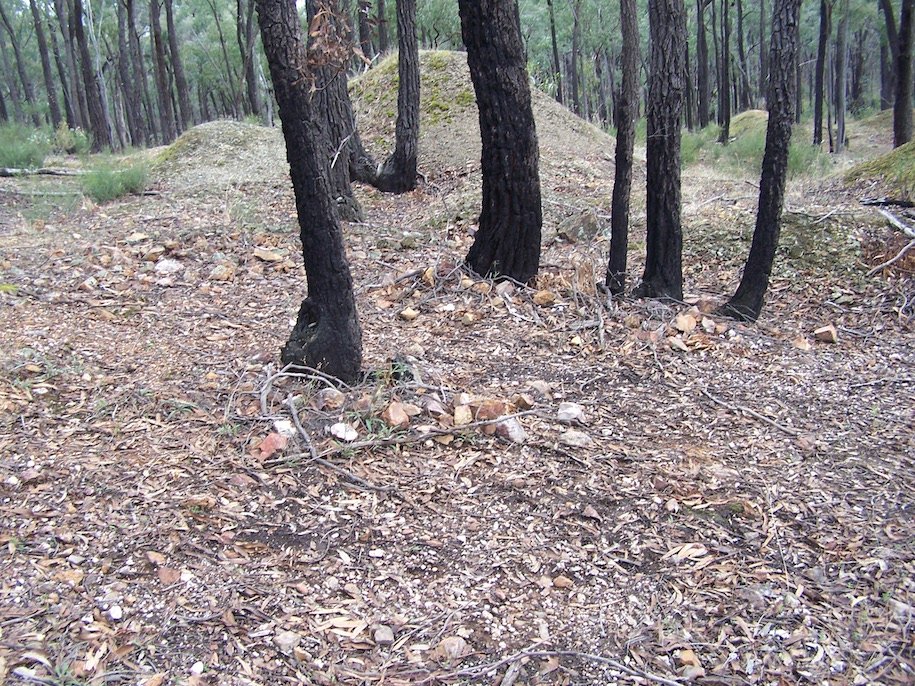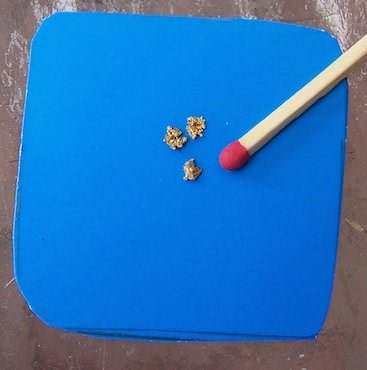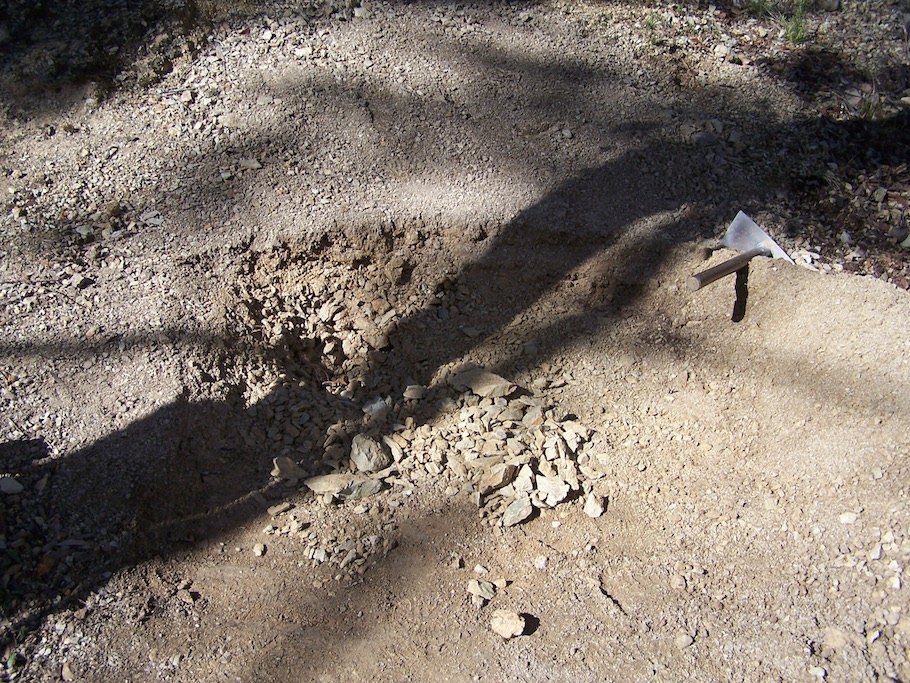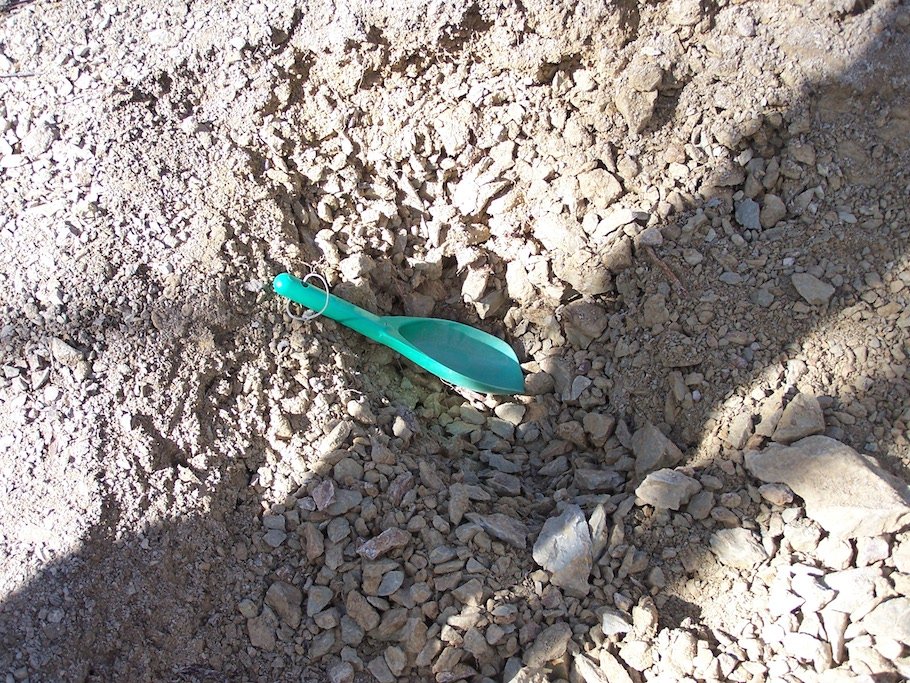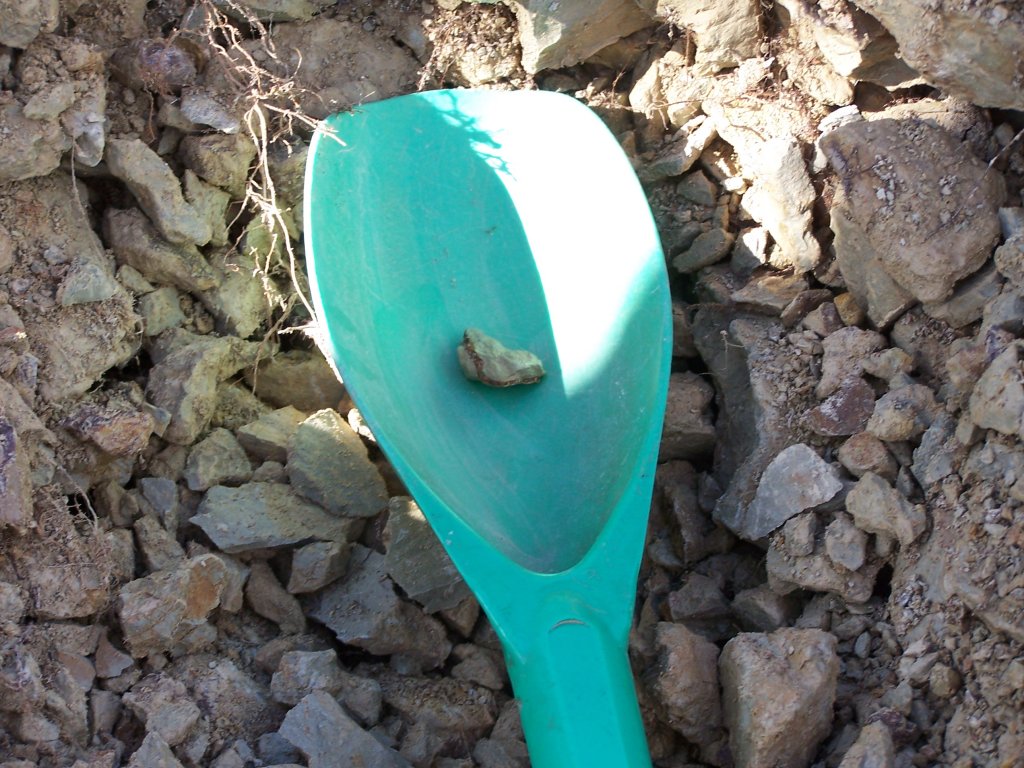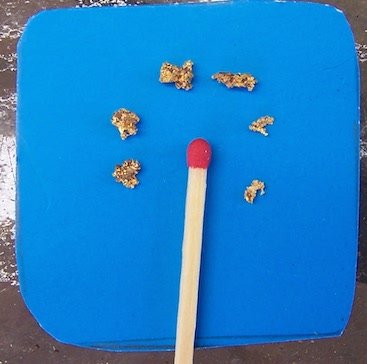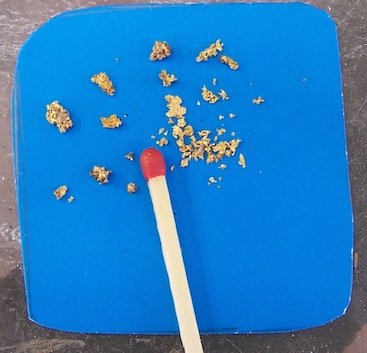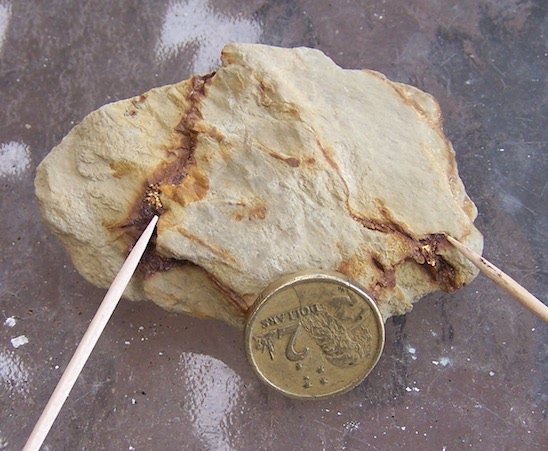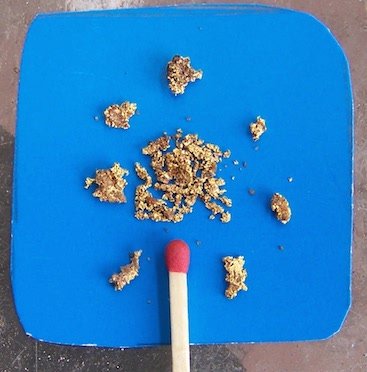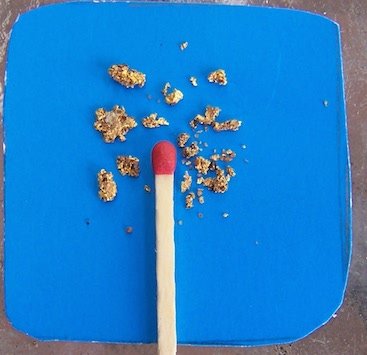Cold and wet so time to catch up on this thread!!!
Wednesday 16th of August.
Today I started at the now famous mullock heap at 'Mystery' Reef. I searched from the top to the base in an area about a metre wide looking for the two targets that I pushed over the edge last week. No luck there. They could be jammed between larger rocks and if they were orientated on their sides they would be very difficult to detect. I then began digging and raking into the top as illustrated below.
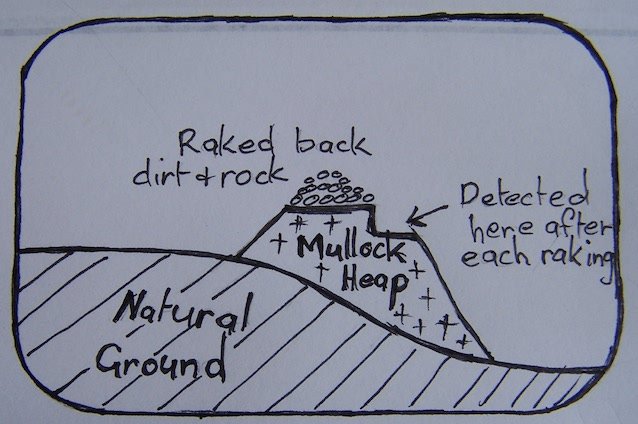
I picked up a flat clean piece after about the third dig and rake. This was the breakthrough that I needed to convince me that what I was doing was worthwhile. The depth also gave me a clue as to how much material I should remove each time. Then another clean piece and a small specimen turned up. Needless to say I continued. Conditions were hard as it was extremely windy, the soil was wet and a bit noisy compared to other times. After four hours I took a break at about 2 o'clock. The traditional tea dunking ceremony was performed showing two almost clean pieces with fragments attached and a small specimen showing a bit of gold. Returning to work netted my fourth target another small specimen. The idea of removing dirt to the depth of my last target meant that I was working more efficiently and so far I had found nothing in the pile of raked back dirt. Today I had the presence of mind to switch frequencies on each target. The two small clean pieces did not register on 20kHz or 6.4kHz. The two specimens however did register a signal on 20khz. I was surprised at the size of the small specimens given their target response. Rain sent me scurrying back to the car for an enforced twenty minute break. Resuming produced another specimen that gave a good signal in both 20kHz and 60kHz. It was a bit bigger this time. All the specimens were located at a depth of between one and a half to two inches and would have to be laying on their flat sides to be detected at this depth. Continuing to dig, rake and detect produced another signal. An exciting one because it responded to all three frequencies though in 6.4kHz it would pass for ground noise. Before I could dig the target rain intervened and I had to leave my scoop marking the spot. Within ten minutes or so I was back on the heap really excited about this dig. With the target out I located the target under a flat piece of stone I thought. I picked up the stone in my left hand and a scoop of dirt with my right. No target in the scoop. I dumped the dirt from the scoop and dropped the rock in. Yahoo my biggest specimen yet!!! Another shower of rain developed steady this time. I was tempted to just pack up and go home but if I was to come across the mess that I had made I would not be happy. So I donned a rain coat and restored the heap as best I could to the way it was at the start of the day. I left a couple of bigger rocks to mark the depth that I had worked to, incase I decide to go back and continue benching into the heap. I have benched into the base on the North and West sides with some success but it was much harder repairing my work as the material had to be shovelled back. Yesterday storing the material as I did and working form the top made it easier to rake the material and repair my mess.
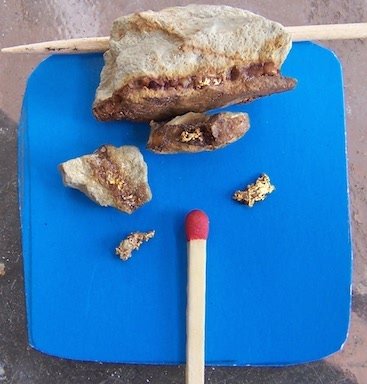
The finds from 16th August. The three smaller specimens and almost clean bits (0.060grams each)
The big specimen. The tooth picks mark two spots where gold was showing. I think that once I scrubbed it up at home with a toothbrush it was showing in about four spots. How exciting!!!!
The crushing was carefully done last night in front of the television. The two bits either side of the match were the first pieces for the day and went 0.060 and 0.063 grams. Most of the chunkier bits came from the smaller specimens. The big specimen contained clusters of small bits around 0.02g in four concentrated spots. If it was laying in the ground flat side up as in the photo that would explain the good signal response. The big specimen produced 0.349g, the smalls 0.308 and the clean bits resulted in a total of 0.780g for the day. Can't wait for it to stop raining and get back out there.
Cheers Bob.




